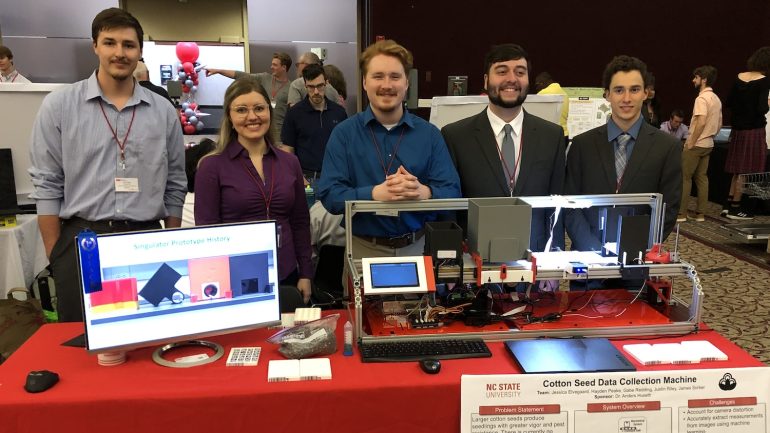- NC State students develop a machine combining machine learning and robotics for agricultural research.
- The machine sorts seeds by size to study their impact on cotton plants’ susceptibility to pests.
- It won first place in the machine learning division of the senior design competition.
- The technology streamlines seed sorting, traditionally a manual and challenging process.
- The machine utilizes computer vision and robotics for precise seed analysis.
- It’s set to play a key role in an upcoming field trial at the Sandhills Research Station.
- This innovation holds promise for accelerating agricultural research and technology advancement.
Main AI News:
In a groundbreaking initiative at NC State University, a group of students has harnessed the power of machine learning and robotics to revolutionize agricultural research. Led by Anders Huseth, an associate professor in NC State’s Department of Entomology and Plant Pathology, the project focuses on investigating the correlation between seed size and susceptibility to pests in cotton plants.
The innovative machine, developed by five seniors majoring in electrical and computer engineering, boasts the capability to accurately detect and sort seeds based on size. This technological breakthrough not only streamlines the research process but also provides valuable insights into the impact of seed size on crop health.
The students’ machine is poised to play a pivotal role in an upcoming field trial at the Sandhills Research Station in Montgomery County. This trial aims to assess whether smaller cotton seeds are more prone to damage from thrips, a common pest in the U.S. cotton belt.
Traditionally, manually sorting seeds by size presented a significant challenge for researchers. However, with the introduction of this automated solution, the process becomes seamless and efficient. The machine utilizes a combination of cutting-edge technologies, including computer vision and robotics, to achieve its objectives.
Key features of the machine include its ability to segregate seeds into labeled wells within custom printed trays, along with the integration of a barcode reader for data logging. Furthermore, a sophisticated camera system captures precise dimensions of each seed, facilitating comprehensive data analysis.
The team’s remarkable achievement garnered them first place in the machine learning division of their department’s senior design competition. Their dedication and ingenuity have not only earned recognition within the academic community but also hold immense promise for the future of agricultural research.
Looking ahead, Huseth envisions broader applications for this technology, emphasizing its role in advancing insect research and seed characterization. As part of the N.C. Plant Sciences Initiative, projects utilizing high-throughput phenotyping platforms aim to propel agricultural innovation to new heights.
Through collaboration between academia and industry, initiatives like these bridge the gap between laboratory discoveries and real-world agricultural practices. As Huseth aptly summarizes, such endeavors represent a “major step forward” in pushing the boundaries of agricultural science and technology.
Conclusion:
The integration of machine learning and robotics by NC State students signifies a significant leap forward in agricultural research. Streamlining processes such as seed sorting not only enhances efficiency but also opens doors to deeper insights into crop health and pest management. This innovation underscores the potential for technological advancements to drive transformative changes within the agricultural market, paving the way for more sustainable and efficient farming practices.

